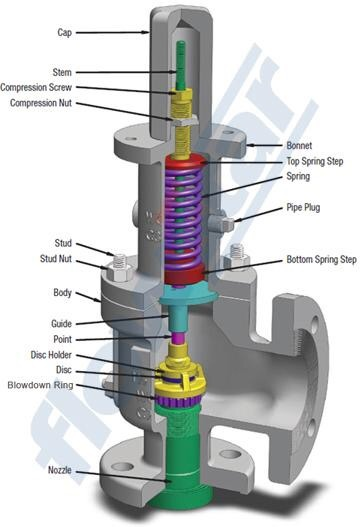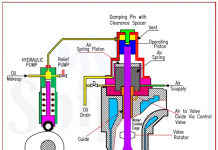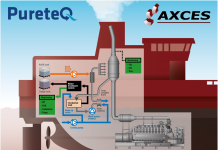
Before attempting to adjust the safety valves of any boiler,its essential to verify the accuracy of the boiler pressure gauge,safety valves must be set at a pressure not exceeding 3% above the approved working pressure each safety valve is adjusted independently.
PROCEDURE FOR SETTING SAFETY VALVE
- Use gagging tool to prevent simultaneous lifting of valves at set pressure
- Remove the caps and keep the valve spindle on valve gagged, set the other valve first.
- Keep the compression nut screwed down,on the valve to be set, till the previous marks.
- Raise steam slowly and bring to set pressure
- You will hear a hissing sound, this is the floating condition of the valve and subsequently the valve will lift. if the valve lifts before the set pressure is achieved tighten the compression nut. if the valve fails to lift at the set pressure loosen the compression nut, maintain the boiler pressure constant while adjusting, reduce boiler pressure, remove gagging tool and fit to other valve for setting.
- After both valves are set, remove the gagging tool and fire the boiler to maximum capacity. note full flow of waste steam from waste steam pipe. note pressure on gauge, the pressure should not exceed 10% of set pressure. after completion refit caps, cotter, locks and easing gear.
ACCUMULATION TEST
It is the problem associated with spring loaded safety valve.
When valve is lifted >spring got lifted>its set pressure increases
Hence further lift of safety valve required high pressure.
This increase in pressure is called ACCUMULATION OF PRESSURE
- Carried out on safety valves during installation of boiler.this is a classification society requirement to test the capacity of safety valve.
- Tests are carried out with steam stop valves shut and boiler firing fully.
- The safety valve should be able to maintain the accumulation pressure within 10% of the working pressure.
- Smoke tube boilers tested for 15 minutes
- Water tube boilers tested for 7 minutes
- Accumulation tests can be waived off for water tube boilers as it would damage the superheaters.



